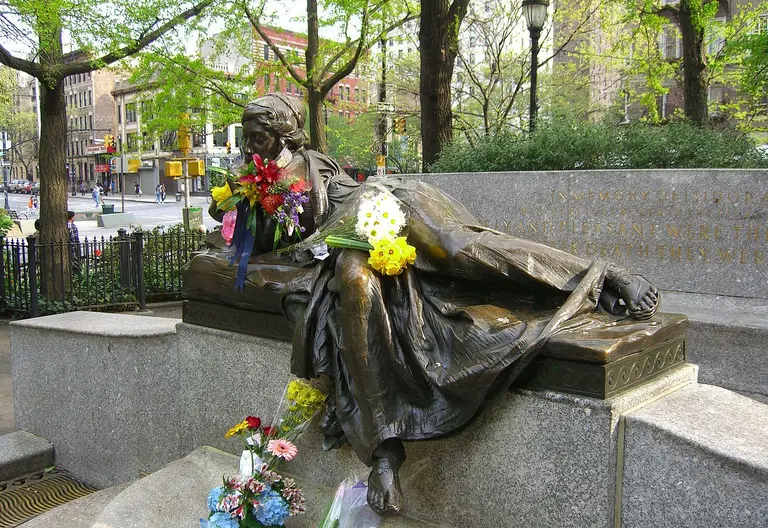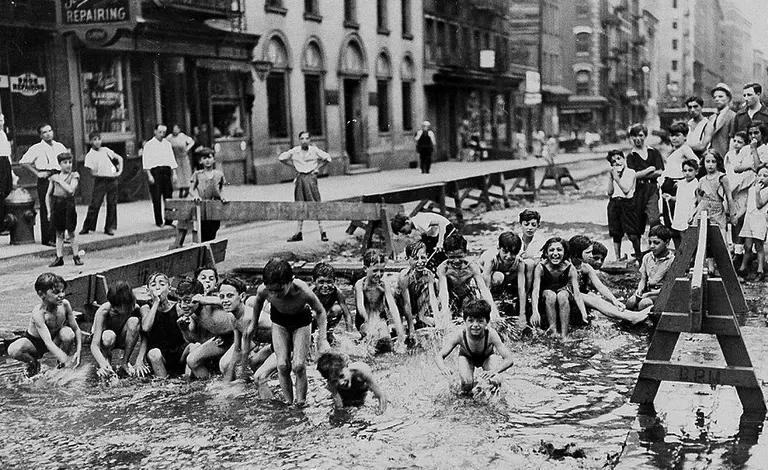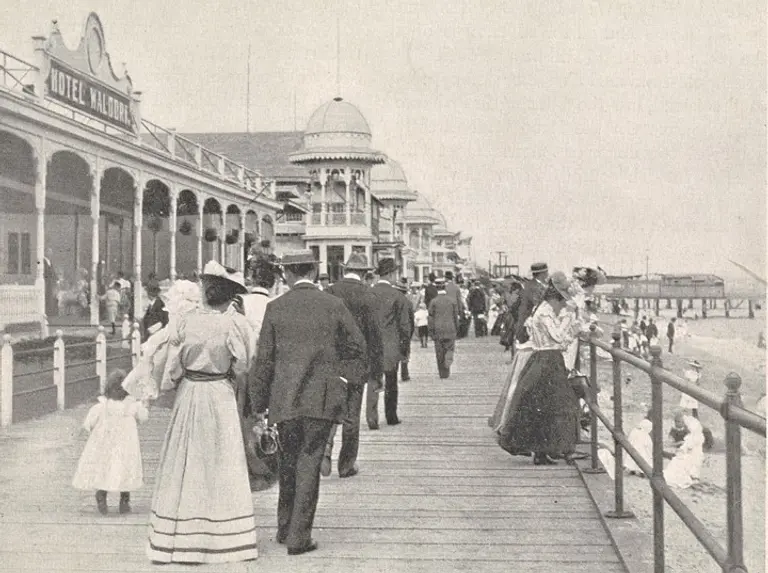New York’s 1940s ‘victory gardens’ yielded a whopping 200 million pounds of produce
learn more here

Photo courtesy of Emptymansionsbook.com.
In the 1980s, the idea that Avenue C would eventually be home to condo developments with names like Boutique 67 would have sent most local residents into a fit of laughter and possibly a fit of rage. At the time, heroin was so widely available in Alphabet City that junkies would simply line up outside local tenements […]

The Isidor and Ida Straus Memorial at Straus Park, modeled after Audrey Munson. Via Wiki Commons.

View of the proposed monument from the New York Herald in 1847 (L); Cornerstone ceremony procession by James S. Baillie, via Library of Congress Prints and Photographs Division

Above: Children turn a Lower East Side excavation site into a pool using water from a fire hydrant. 1936. Image via Bowery Boys
Since Greenpoint started to attract displaced Manhattanites in the early 1990s, the cost of renting in the neighborhood and nearby Williamsburg has shot up a staggering 78.7 percent. According to a 2015 study published by NYU’s Furman Center, Greenpoint/Williamsburg is the most rapidly gentrifying neighborhood in New York City. What many newcomers don’t realize is that […]

South Beach in 1899 © NYPL Digital Gallery
Have you ever wondered if someone famous used to live in your building? Or what architect built it? What about more dramatic things, like police activity and rat infestations? Verifying these facts–who once lived at your address, whether or not it was ever the scene of a crime, past construction work and violations, and its […]
The New York City artist’s loft is arguably among the most romanticized and coveted living spaces in the world. It has been used as a backdrop for avant-garde films by Andy Warhol, the central scene of a musical (yes, we’re talking about Rent), and more recently, as the focus of several museum shows (for example, the […]